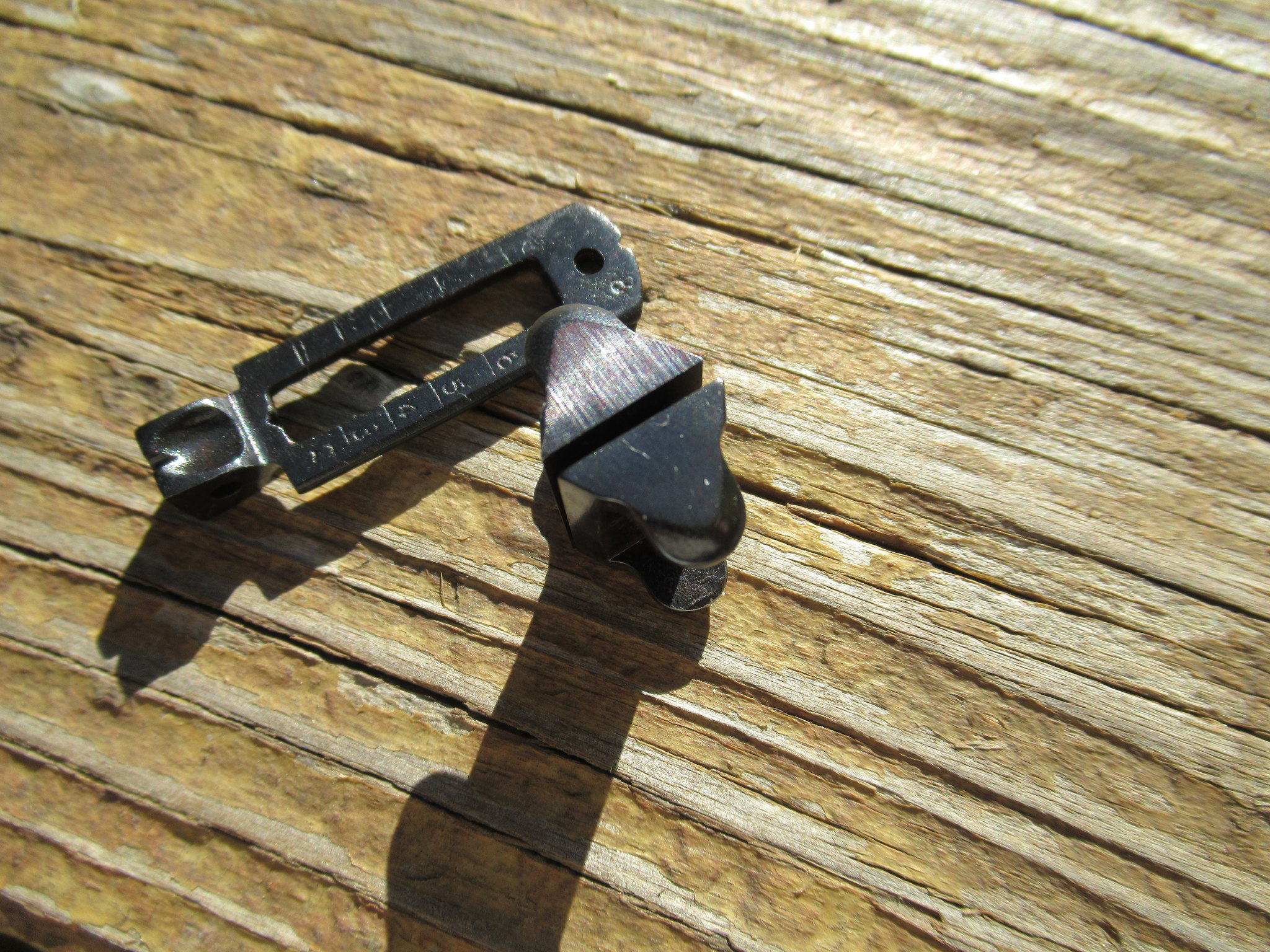Phil Coffins
69 Cal.
Some replica parts can have a purple color that should be blue/black. Today I decided to take care of a couple. The tools needed are a bottle of Plum Brown, propane torch, q-tips, steel wool, oil, a piece of wire, sand paper, hot plate and a tin cup full of water. The parts are sanded as needed then the wire is used to hold them. Get the water boiling in the cup and heat the parts for the browning. Coat the hot parts with Plum Brown and give them a couple of minutes to get a coat of rust then place them in the boiling water. Allow them to boil a few minutes then heat with the torch to re-coat the them with browning. Boil again then rub lightly with wet steel wool. Repeat about six times or till they look black in strong light. Oil them and set over night. Rub with a rag and you have a durable finish.
Heres two I did with another that still has that purple color from the factory. This took just over an hour to do and to my eye makes a big change.
 IMG_0960 by Oliver Sudden, on Flickr
IMG_0960 by Oliver Sudden, on Flickr
Heres two I did with another that still has that purple color from the factory. This took just over an hour to do and to my eye makes a big change.
 IMG_0960 by Oliver Sudden, on Flickr
IMG_0960 by Oliver Sudden, on Flickr





